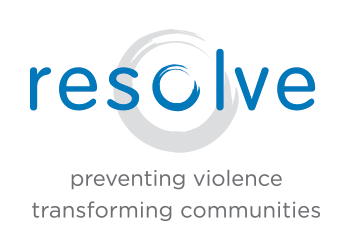Every person has the right to defend themselves. Violence is a complex issue, and self-defense requires more than just physical techniques.
Empowerment Self-Defense (ESD) is a holistic approach to personal and community safety which teaches skills to address the full spectrum of violence, from verbal harassment to physical violence.
ESD is an evidenced-based violence prevention system. It teaches individuals to interrupt violence by listening to their intuition, assessing the situation, setting boundaries, and using de-escalation strategies; and provides tools for a range of verbal and physical responses.
All ESD programs use the following guidelines:
-
Length of Programs
Valuable self-defense tools can be taught in short or longer amounts of time. Programs can and should be at varying lengths to reach the broadest population of women and girls in recognition that women and girls have varying resources and responsibilities but all need access to high quality self-defense training.
-
Content of Programs
Regardless of length, programs should include the key components of self-defense training–varying in depth of content covered. Each program would include something about the framework, boundary setting, and concrete tools with more material covered, the longer the program. All self-defense tools and skills, in all aspects of the range, include physical, mental, emotional, spiritual, and social/ cultural components. A framework for understanding violence and self-defense includes:
a. Culture of Violence
- Gender socialization and gender stratification and their role in violence
- The interconnections among sexism, racism, and classism and their role in violence
- Understanding of power relationships, including the teacher-student relationship, and how to minimize abusive power relationships and create a safe environment
- Acknowledgment of the cultural tendency toward victim-blaming. Make it clear that accountability for violence lies with the person who commits it and that everyone has the right to make choices about whether or not to fight back.
- Realistic assessment of risks and options, drawing upon current statistics
- Similarities and differences between stranger, acquaintance, and relationship violence
- Similarities and differences between violence and self-defense, including awareness of our own potential for violence
- Similarities and differences between martial arts and women’s self-defense
- Necessity for collective action and building alliances with the anti-violence community
- Opportunities for participants to reflect upon their own experience with violence and self-defense
- Understanding that violence creates trauma and that participants in a self-defense course may have been victims or perpetrators of violence. Instructors need to create physical and emotional safety to support self-defense as a healing process and to provide experience with non-violent environments.
b. Boundary setting skills, includes:
- “Seeing” danger
- Being open to positive outcomes
- Recognizing and establishing safe distance
- Projecting confidence
- Reading body language
- Power of the voice and ability to vary volume and still be effective
- Setting and maintaining boundaries
- Consistency between body language, voice, and content
- Assertiveness (and its distinction from both aggression and passiveness)
- De-escalation
- Confrontation
- Controlling one’s own emotions (e.g. breathing, “Take 10,” or other methods)
- Speaking up against violence even if you are not the target
- Teachers modeling effective boundary setting/assertive skills–setting clear expectations, giving supportive and effective feedback
- Opportunities to practice boundary setting skills in the group, with partners, or with an instructor
c. Concrete tools, includes:
- Provide a context for the tools (e.g. you’ve set boundaries which have been ignored or have been grabbed in a threatening way)
- Using one’s breath
- Learning to recognize intense feelings and how to use them.
- Emphasis on the purpose: getting to safety (i.e. not beating someone up)
- Acknowledge escape, “hit and run,” and choosing to survive as viable options
- Clarify that physical tools are tools of last resort
- Frame use of physical tools within the ethic that “The greatest compassion (towards self and others) yields the least harm.”
- Tools are simple, easy to learn by any woman, their execution allows “room for error” (i.e. doesn’t require precise execution to be effective)
- When framing the tools, differentiate from “sport.”
- Body language, dodging/evading methods, releases from grabs
- Deal with defenses against grabs, against weapons, and defenses from the ground
- Opportunities for practicing physical skills, conveying a respect for many known methods for teaching physical techniques, for instance, in the air, with pads, with partners using control, and with padded attackers.
- Make clear distinctions between strikes that cause serious damage, strikes that distract without lasting harm, holds that contain without hurting, holds/ locks that injure, sweeps that off-balance, sweeps leading to takedowns, etc. etc. OR relaxation exercises, deep breathing techniques, verbal roleplays, or roleplays that use strikes, stance, etc.
Courtesy of National Women’s Martial Arts Federation, Marie O’Brien (Thousand Waves Martial Arts and Self Defense), Martha Thompson (IMPACT Chicago), and Nancy Lanoue (Thousand Waves Martial Arts and Self Defense).
